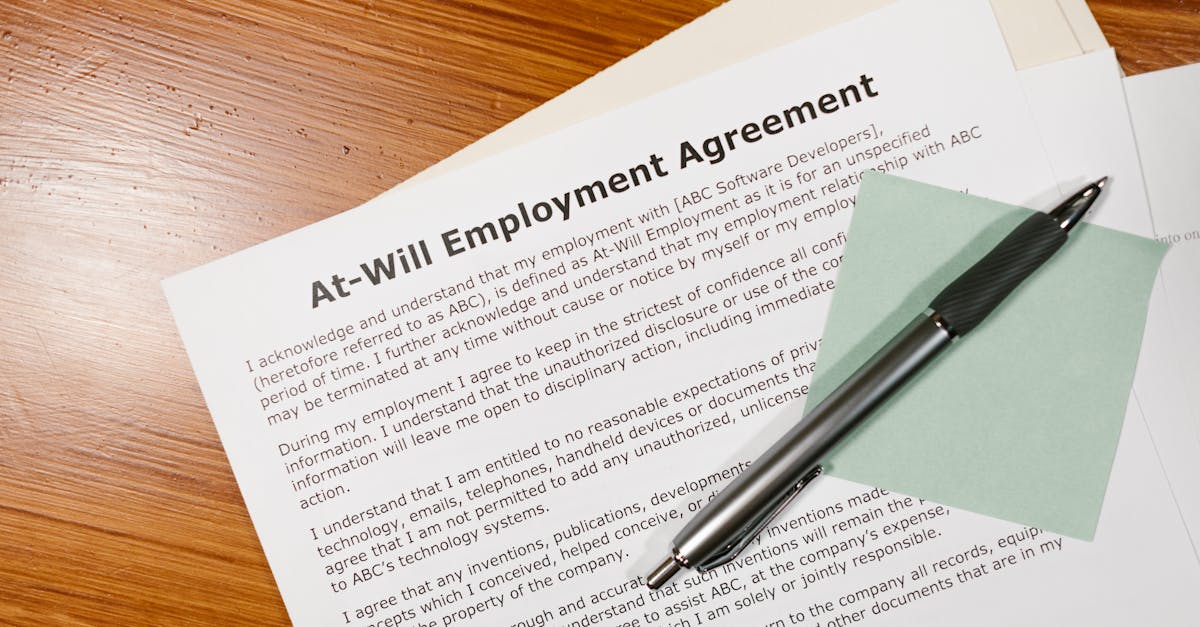
Introduction
Why it matters — Hiring shouldn’t slow your business. Inconsistent checklists, manual access provisioning, and scattered training records stretch ramp time, create compliance gaps, and burn HR bandwidth. As teams scale, you need predictable, repeatable processes that tie offers, access and certifications directly to the role — not to tribal knowledge.
Role‑based templates make that possible. Compose hires from **modular role profiles** (core + department + level), stage **gated access requests**, and model conditional equity and compensation packs — then pair those templates with **document automation** and document AI to verify evidence, auto‑issue certifications, and keep an auditable trail to streamline HR onboarding and give HR a single source of truth. Below you’ll find practical guidance on structuring profiles, automating enrollments and certification issuance, attaching compliance documents, and piloting rollout so new hires hit productivity faster without sacrificing security or legal defensibility.
Design modular role profiles (core, department, level) and list required documents, trainings and access per profile
Modular role profiles break the HR onboarding workflow into reusable pieces: core (company-wide), department, and level (seniority/manager vs. IC).
How to structure each profile
-
Core profile — employment paperwork, payroll setup, basic security training, and company policies. Use a standard HR onboarding checklist for these items.
-
Department profile — role-specific tools, team processes, department training, and access to shared drives or internal apps.
-
Level profile — managerial approvals, leadership training, escalation privileges or sandbox accounts, and extra compliance steps where required.
Typical required items per profile
-
Documents: offer & employment agreement, tax forms, NDAs and role-specific agreements. (Example template: employment agreement.)
-
Trainings: security awareness, role-specific systems, and compliance modules mapped to department needs.
-
Access: email, SSO groups, production vs. dev environment access, and tool licenses.
This modular approach lets you compose a new hire profile by combining core + department + level, keeping the onboarding process consistent and easy to manage across hires and teams.
Automate training enrollments and certification issuance after completion using document AI to verify evidence
Automate enrollments so every new hire is automatically enrolled in the training modules tied to their combined role profile.
Automation flow
-
Trigger: new hire record created and role profile assigned.
-
Action: enroll in mandatory courses via your onboarding software or LMS.
-
Verification: use document AI to validate uploaded proof (certificates, IDs, transcripts) or scanned completion artifacts.
-
Output: system issues a verified completion certificate and updates employee record.
Why use document AI
Document AI helps ensure the evidence of completion is authentic before issuing certifications or unlocking privileges. This reduces manual review and speeds up the employee onboarding lifecycle.
Example certificate issuance
-
On verified completion, automatically generate and store a training certificate (use something like the achievement certificate). Attach it to the employee profile and to the HR onboarding checklist.
Create secure access request templates that only execute after prerequisites (background check, confidentiality agreement) are satisfied
Gated access requests protect sensitive systems by ensuring prerequisites are met before provisioning.
Template design
-
Prerequisite checks — background check completion, signed confidentiality/NDA, drug screen (if applicable), and role-specific compliance training.
-
Trigger rules — policies that evaluate prerequisites and only then execute the access request template to create accounts or add SSO groups.
-
Audit trail — every execution should log who requested access, which prerequisites were validated, and a timestamp.
Practical implementation
Implement these templates inside your HR onboarding system so that access requests are staged until the clearance gate is green. This reduces human error and ensures access aligns with your onboarding process and security policies.
For highly regulated hires, include HIPAA or other authorization checks as part of the gating logic (see templates below).
Tie equity and compensation onboarding to role templates (offer, stock option agreements, tax forms) using conditional variables
Linking compensation and equity to role templates ensures consistency and reduces manual errors during new hire onboarding.
What to include in the template
-
Offer letter(s): variables for base salary, start date, bonus eligibility, and manager. Use the employment agreement template for the core document (employment agreement).
-
Equity paperwork: conditional inclusion of stock option agreements if the role is eligible (stock option agreement).
-
Tax forms: country/state specific tax documents triggered by the employee’s location variable.
Conditional variables to model
-
Role_EligibleForEquity — toggles stock documents and vesting schedule.
-
Contract_Type — full-time, part-time, contractor to select correct tax/treatment forms.
-
Location — triggers local compliance and payroll variances.
When these variables are set in the role profile, the HR onboarding system generates the correct package automatically and tracks acceptance dates and signatures.
Make compliance simple: attach DPAs, HIPAA authorizations or security acknowledgements to relevant role flows
Attach compliance documents directly into the role flows so people only see what’s relevant to their job and jurisdiction.
Which documents go where
-
Data processing and vendor access: attach the Data Processing Agreement where the role handles customer or third-party data (DPA).
-
Healthcare roles: require signed HIPAA authorization forms before system access (HIPAA authorization).
-
Security-sensitive roles: include security acknowledgements and the results of background checks or clearances.
Implementation tips
-
Map each compliance doc to role templates so they’re auto-attached during onboarding.
-
Version documents centrally and audit which hires signed which versions for legal defensibility.
Template recommendations: employment agreements, stock option forms, DPAs, training certificates and HIPAA authorizations
Use standardized, approved templates to keep your HR onboarding process consistent and legally sound.
Recommended templates (with quick links)
-
Employment agreement: canonical offer & employment terms — employment agreement.
-
Stock option agreement: equity paperwork and vesting schedules — stock option agreement.
-
Data Processing Agreement (DPA): for roles that handle customer data — DPA.
-
Training certificate template: auto-issued on verified completion — training certificate.
-
HIPAA authorization: for healthcare and related roles — HIPAA authorization.
Keeping these templates in a central library makes them easy to attach to role profiles and to manage with an HR onboarding system or onboarding software.
Rollout tips: run a pilot for high‑volume roles, collect completion metrics and expand templates across departments
Start small and measure everything before a full rollout.
Pilot plan
-
Select pilot roles: choose high-volume, repeatable roles (e.g., customer support, standard IC roles) to iterate quickly.
-
Run timeline: 4–8 week pilot with clear milestones for enrollment, completion, and provisioning.
Metrics to collect
-
Completion rate — percent of new hires who finish required steps within the target window.
-
Time-to-productivity — days until the employee can perform key responsibilities.
-
Certification pass rate — validated course completions via document AI.
-
Retention delta — compare retention for hires who completed the flow vs. those who didn’t.
Expand and iterate
Use pilot data to refine role templates, update the onboarding checklist, and roll the flows out department-by-department. Automate what works, keep human checks where needed, and integrate with your HRIS and HR onboarding software for scale.
Summary
Role‑based onboarding templates let you compose hires from modular profiles (core + department + level), gate sensitive access until prerequisites are met, automate training enrollments and certificate issuance with document AI, and attach the right compliance paperwork automatically. That combination reduces manual handoffs, shortens ramp time, and creates an auditable single source of truth that benefits both HR and legal teams by cutting review time, limiting risk, and preserving defensible records. Implement pilots for high‑volume roles, measure completion and time‑to‑productivity, then scale what works — and if you want ready templates and automation tools to get started, visit https://formtify.app
FAQs
What is HR onboarding?
HR onboarding is the structured process that brings a new hire from offer acceptance to full productivity. It includes paperwork, systems access, training, compliance checks, and the ongoing touchpoints that help someone integrate into their role and the company.
How long should onboarding last?
Onboarding is often staged: essential admin and access in the first week, role training over the first 30 days, and full ramp typically measured at 60–90 days depending on role complexity. Use pilot metrics to set targets for completion and time‑to‑productivity for each profile.
What are the key steps in the onboarding process?
Key steps include issuing the offer and employment paperwork, assigning a composite role profile, provisioning gated access after prerequisites are met, enrolling new hires in required training, and verifying completion with certificates attached to the employee record. Regular check‑ins and documentation of milestones close the loop for performance and compliance.
How can HR improve employee onboarding?
Improve onboarding by using modular role templates, automating enrollments and access requests, and applying document AI to verify evidence and issue certifications. Measure completion rates and time‑to‑productivity, iterate from pilot data, and keep legal and compliance documents versioned centrally.
Is onboarding the same as orientation?
No — orientation is typically a short, introductory session that introduces company basics, while onboarding is the broader, ongoing process that includes paperwork, access provisioning, training, and integration into role and culture. Onboarding spans weeks or months and focuses on enabling full job performance.





